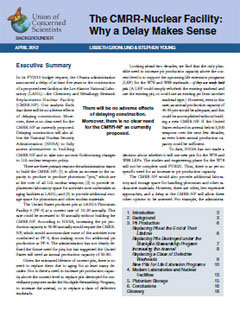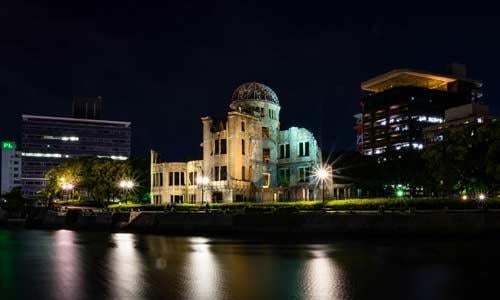In its FY13 budget request, the Obama administration announced a delay of at least five years in the construction of a proposed new facility at the Los Alamos National Laboratory (LANL)—the Chemistry and Metallurgy Research Replacement-Nuclear Facility (CMRR-NF).
Our analysis finds that there will be no adverse effects of delaying construction. Moreover, there is no clear need for the CMRR-NF as currently proposed. Building the CMRR-NF would support an increase in the capacity to produce plutonium “pits,” which are at the core of all U.S. nuclear weapons. Pits would continue to be produced at Plutonium Facility-4.
There are three possible reasons to build the CMRR-NF:
- to allow an increase in pit production capacity above the rate of 50 annually that could be achieved without the CMRR-NF;
- to provide replacement laboratory space for activities now undertaken elsewhere; and
- to provide additional storage space for plutonium and other nuclear materials.
We show that the only plausible need to increase pit production capacity above the current level of 10-20 annually is to support a life extension program (LEP) for the W78 and W88 warheads—if they use newly built pits. However, even in this case, an annual production capacity of 40-45 pits would be adequate and this could be accomplished without building a new CMRR-NF. If the United States reduced its arsenal below 3,500 weapons over the next few decades, an even lower annual production capacity would be required.
In any event, NNSA has not yet made a decision to use new pits for the W78 and W88 LEPs, and the studies and engineering phase for the W78 will not be complete until FY21. Thus, there is as yet no identified need for an increase in pit production capacity.
While the CMRR-NF would provide additional laboratory and storage space for handling plutonium and other radioactive materials, there are other, less expensive approaches, and delaying construction will allow these other options to be assessed.
Finally, many of the issues CMRR-NF raises will be affected by decisions the Obama administration may soon make about the overall size, structure and mission of U.S. nuclear forces.
To address these issues, we recommend that Congress:
- Require an independent study to: (1) determine the materials analysis and other plutonium science-related capabilities that are required to maintain the nuclear stockpile, (2) assess whether existing facilities at Los Alamos or elsewhere could meet those requirements on an ongoing basis, and (3) provide cost estimates for these options. The NNSA is currently undertaking a study like this, due for completion in April 2012. However, an independent study would ensure that all the options are thoroughly considered.
- Require an independent study to assess the future need for production of plutonium pits, once the administration makes pending decisions on U.S. nuclear policy.
- Require that NNSA update its findings on the lifetimes of plutonium pits and request the JASON panel to review that assessment. This assessment by NNSA and review by the JASON panel should occur periodically.




